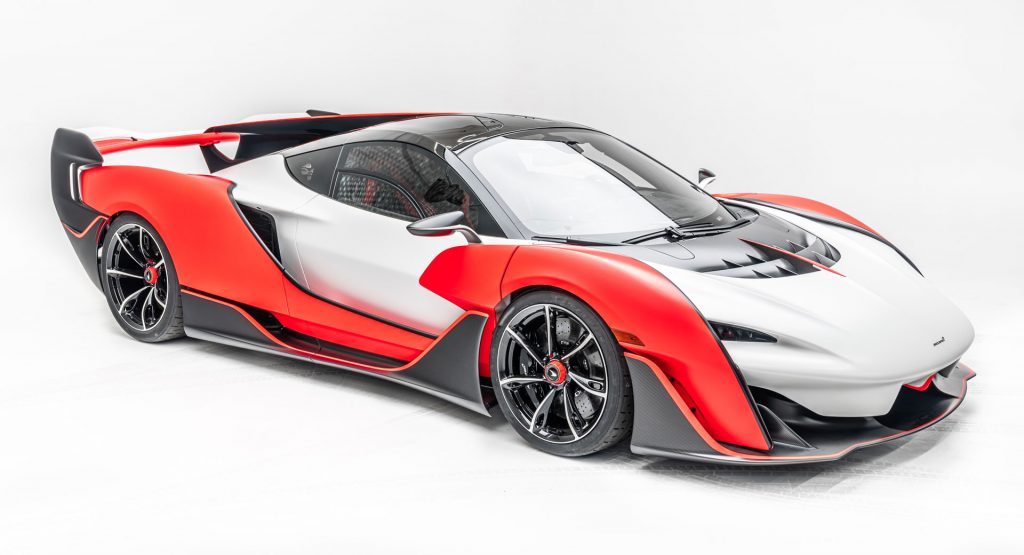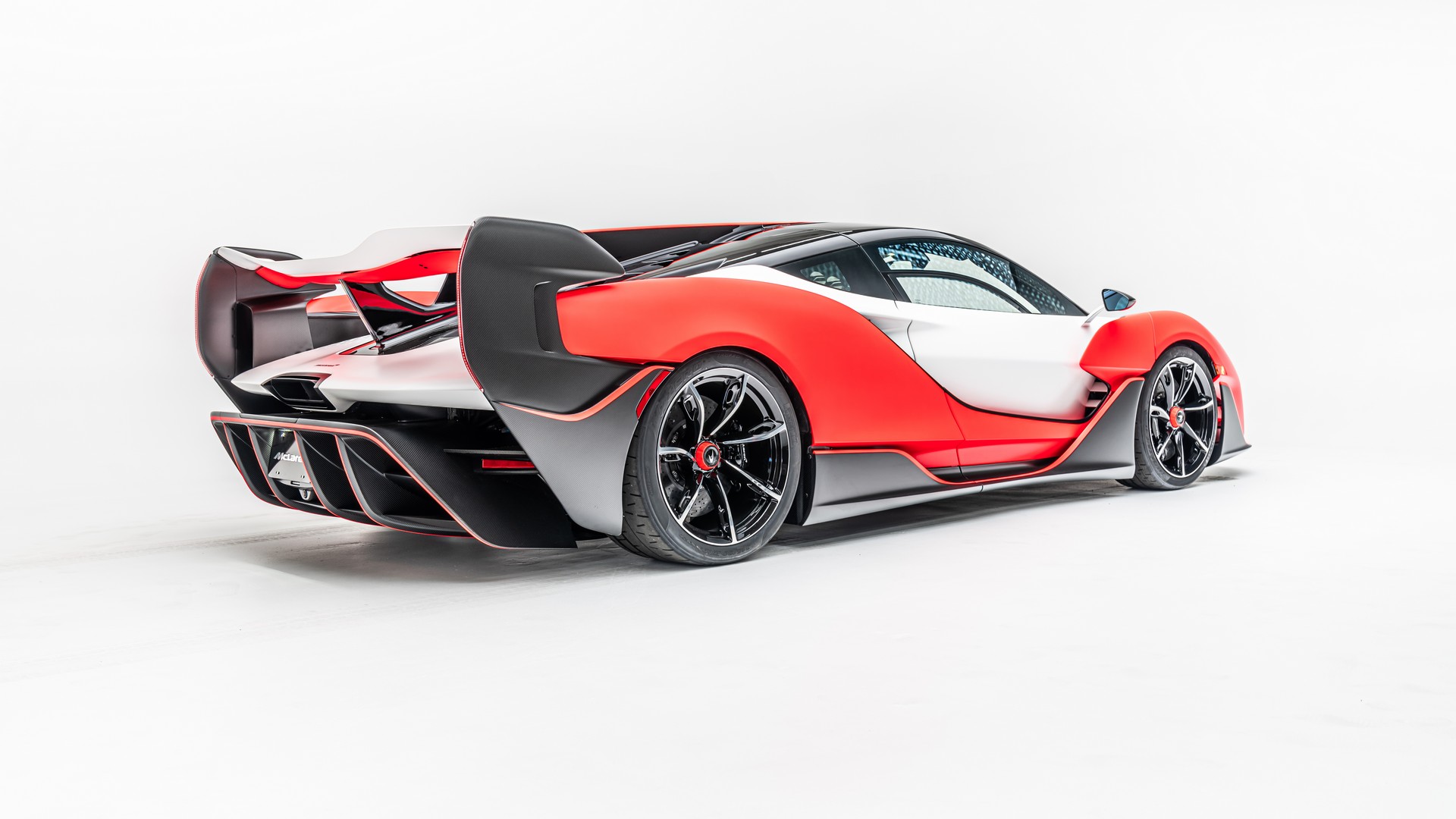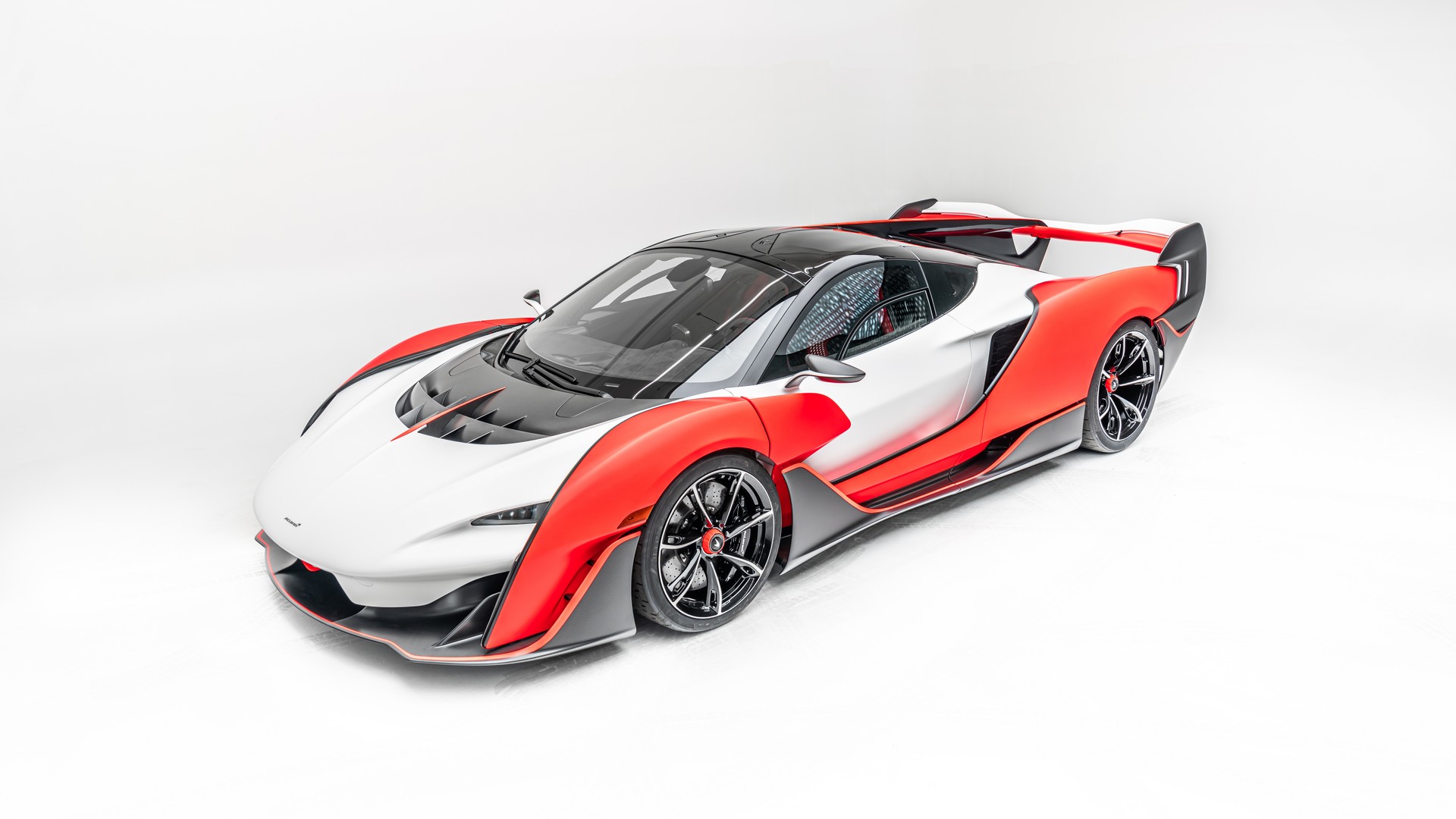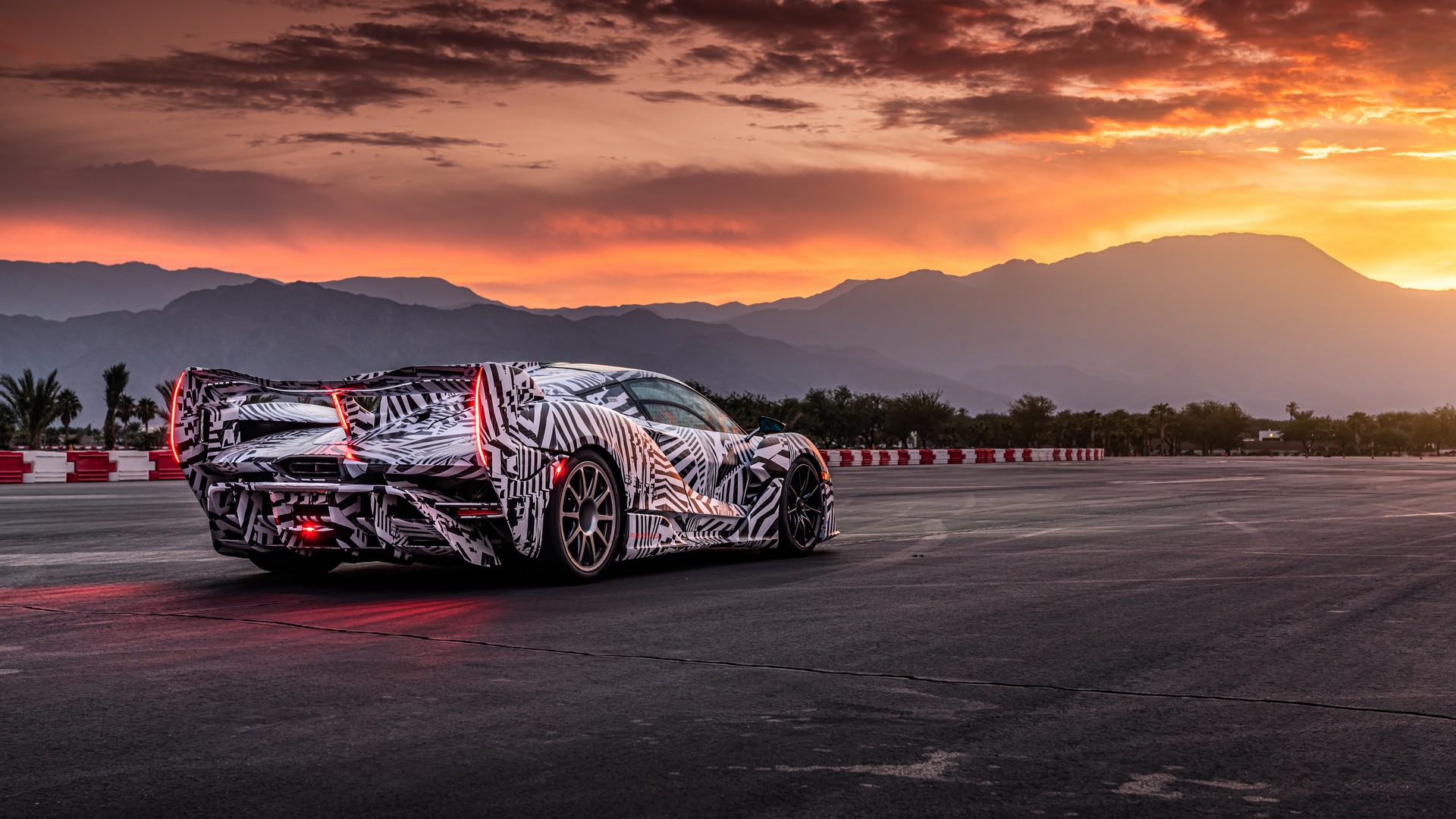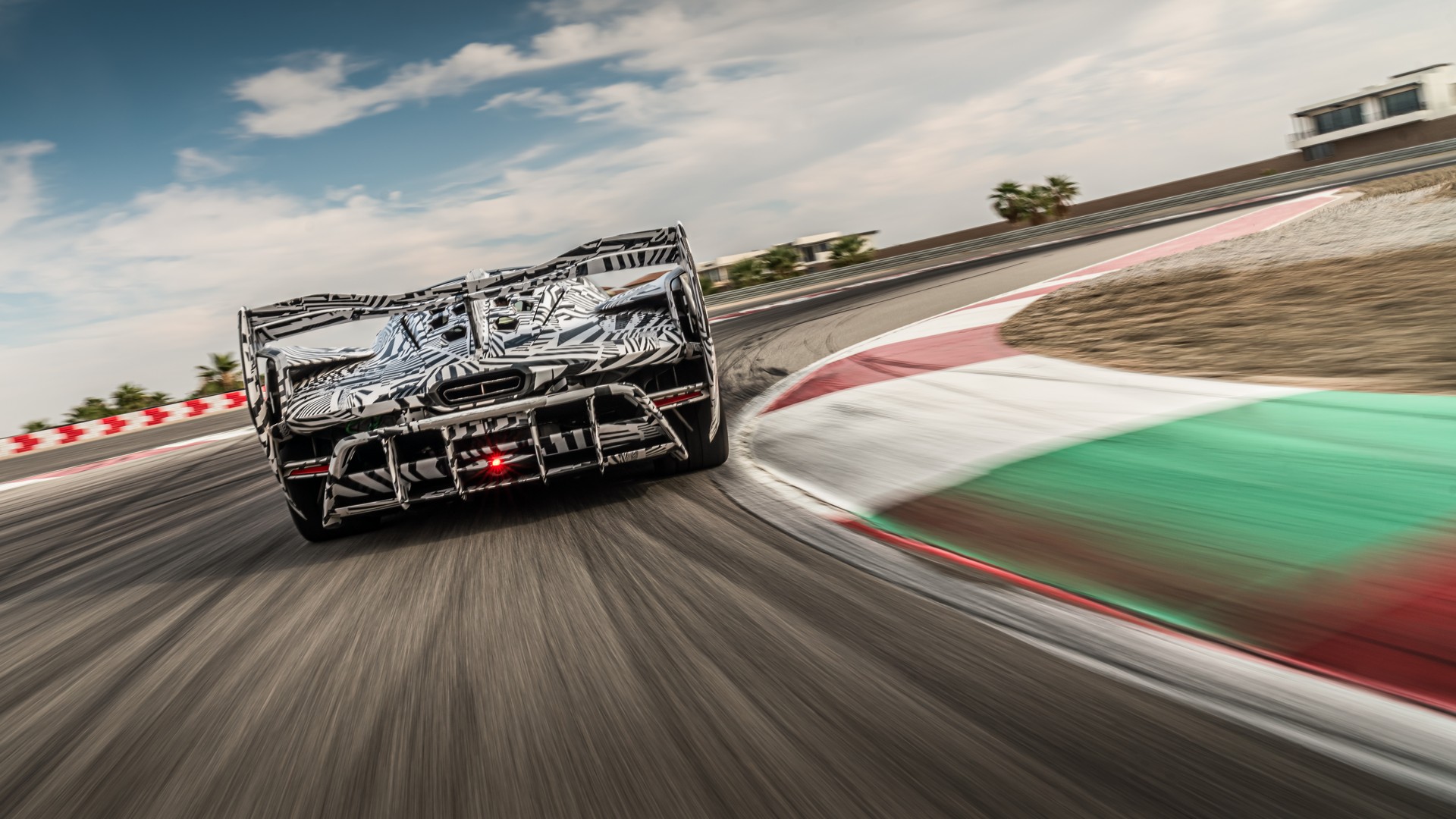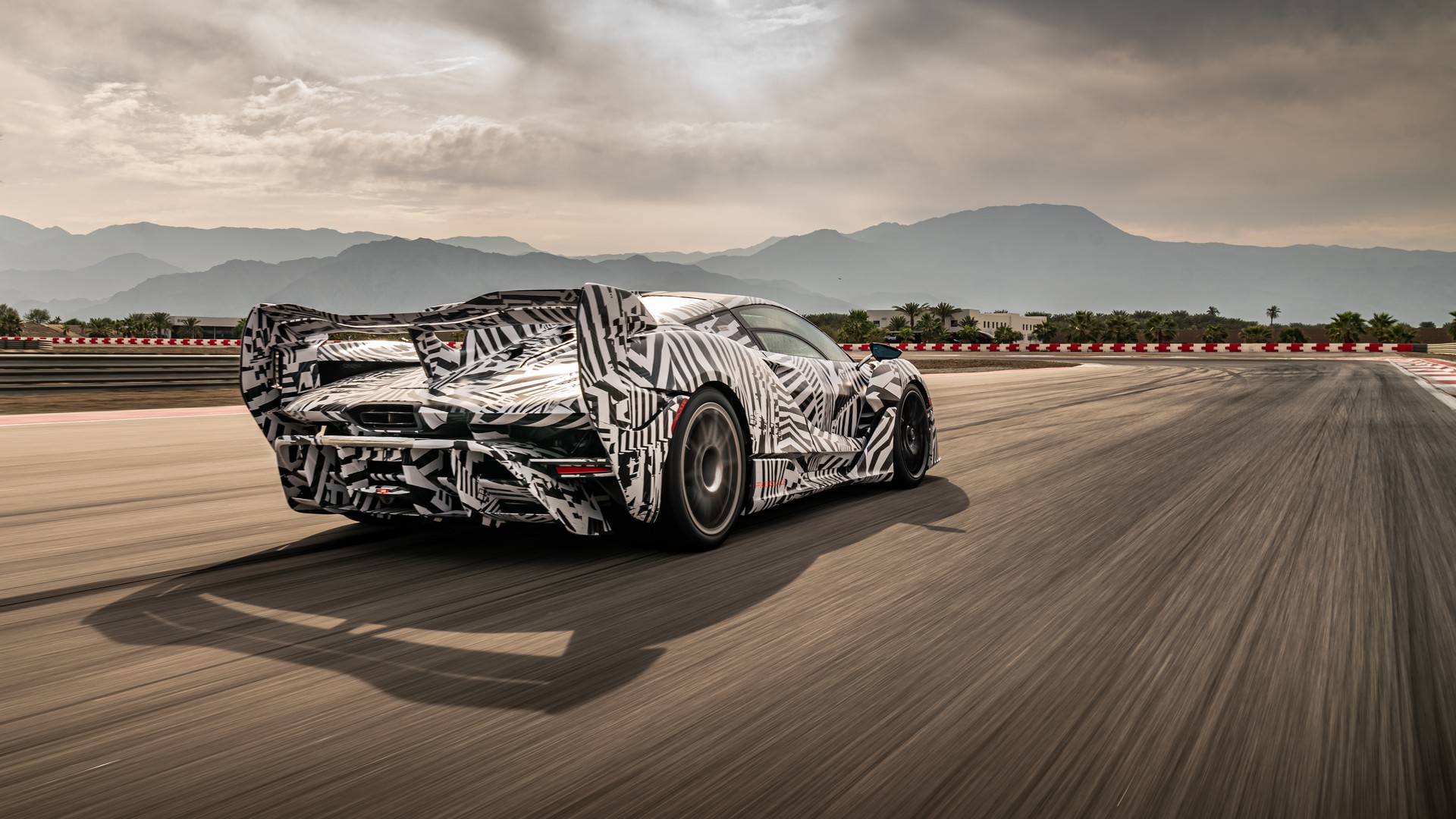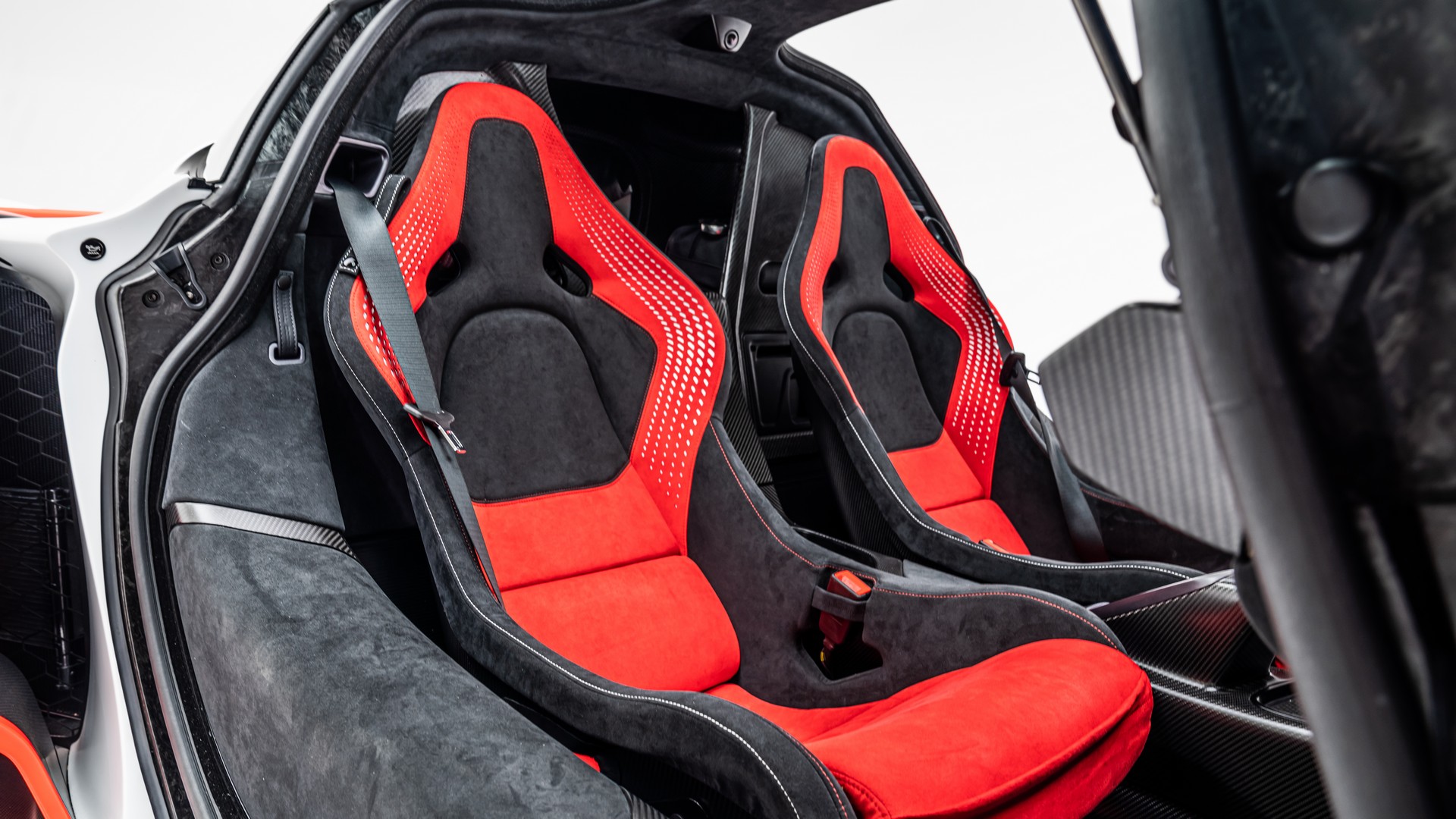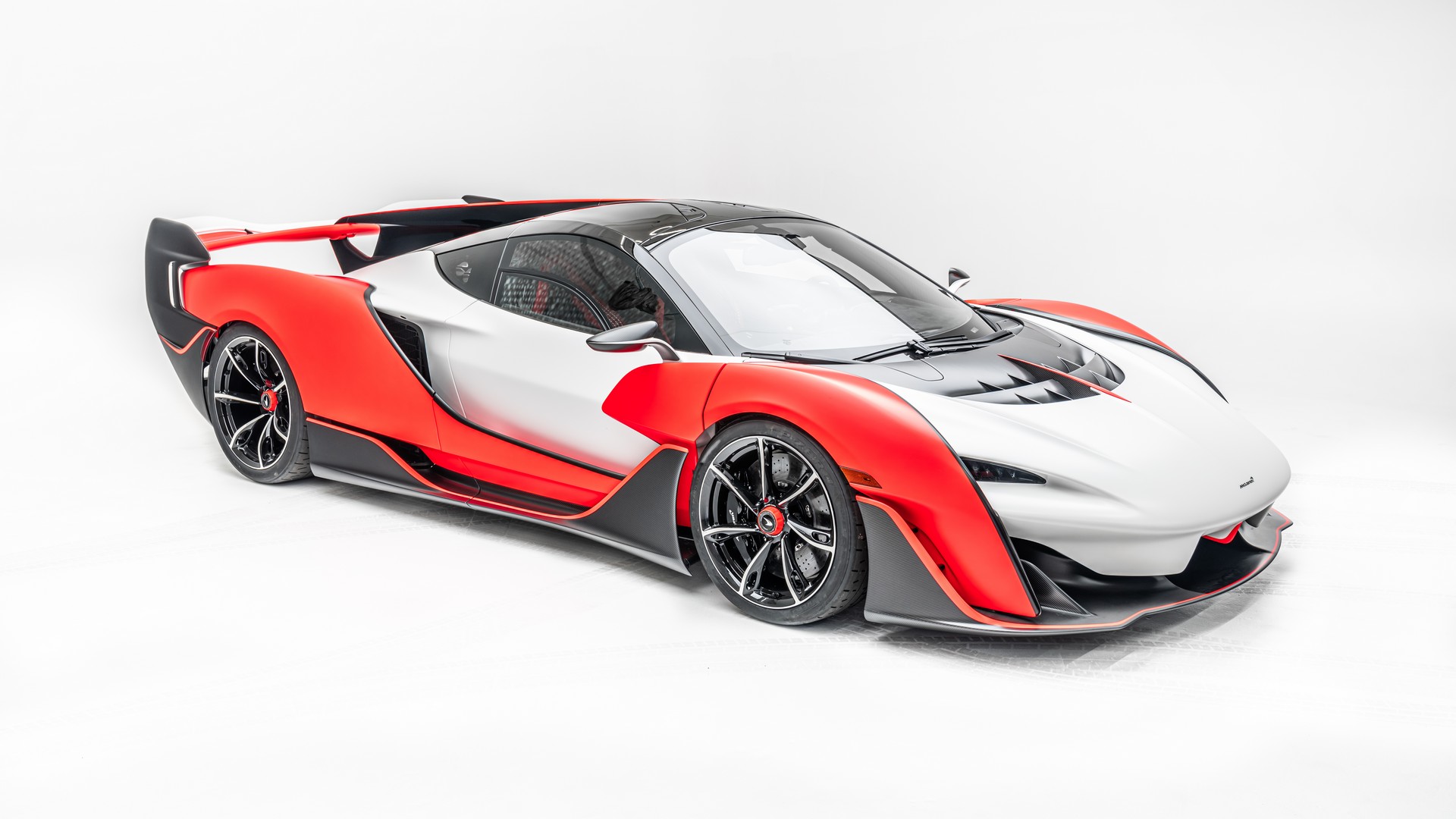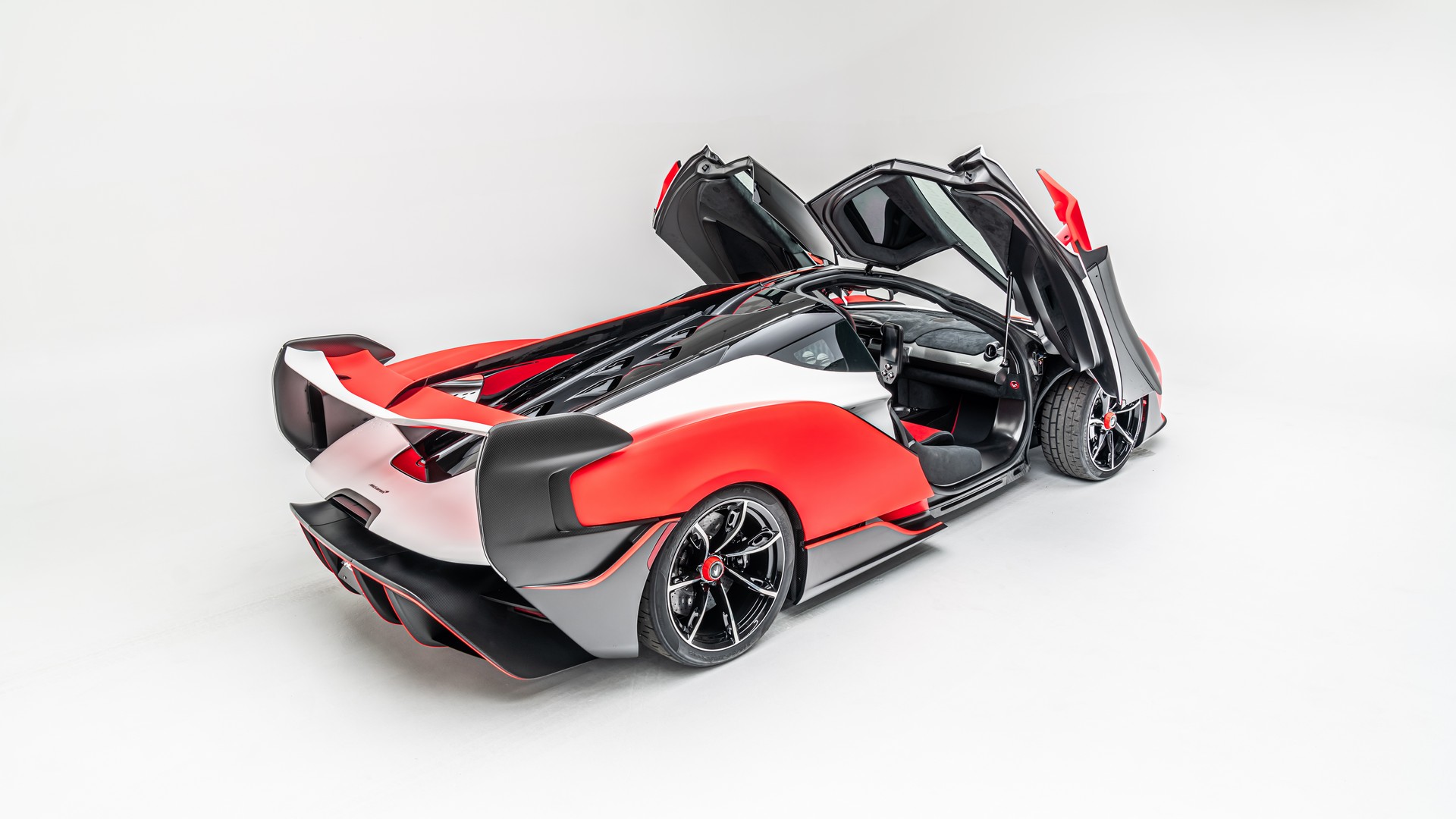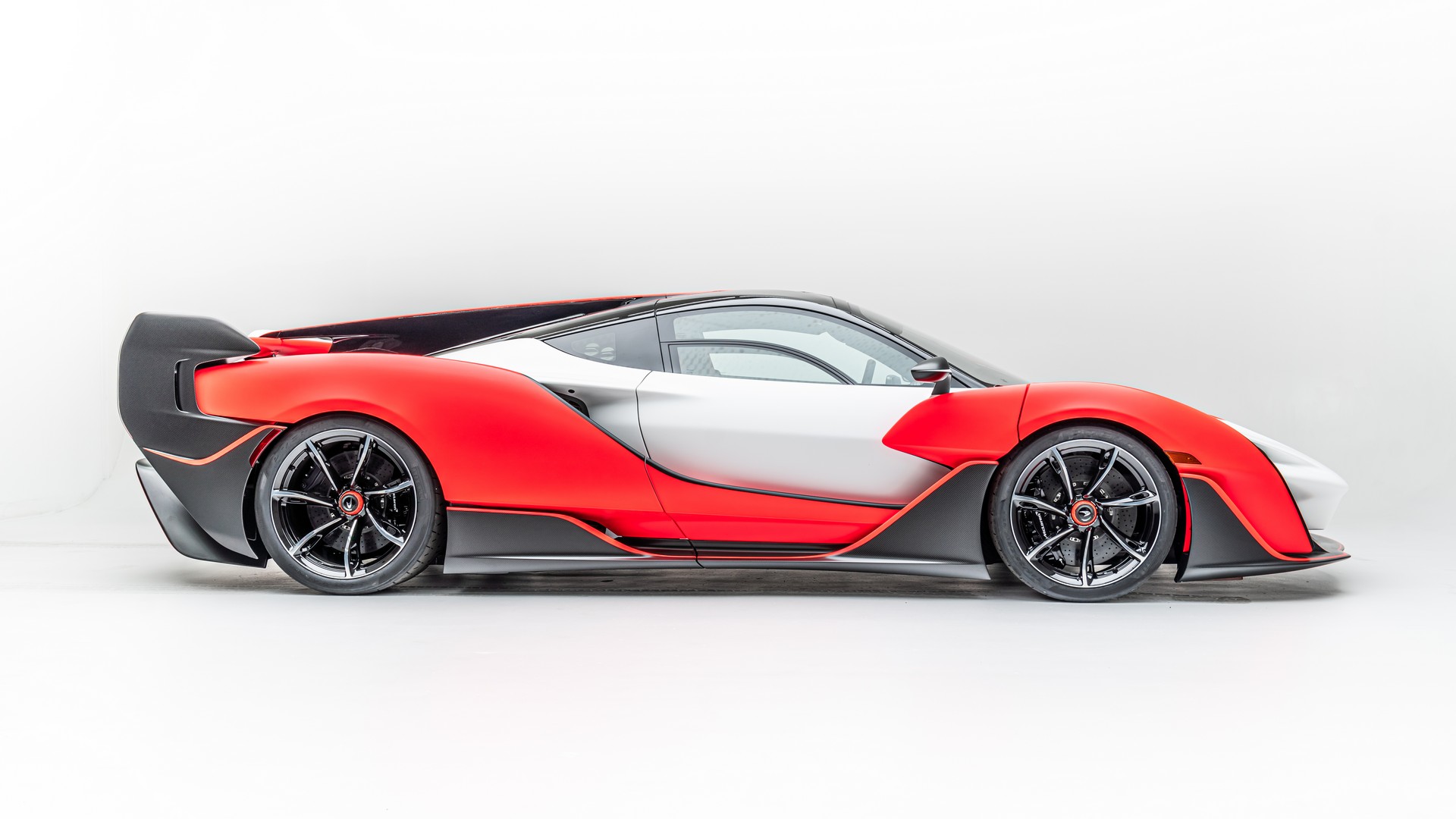McLaren Beverly Hills has pulled the wraps off the limited edition Sabre.
Created by McLaren Special Operations, the Sabre has been designed exclusively for the United States and this allowed the model to use “ideas and innovations that global homologation would not permit.”
The company didn’t go into many specifics, but the car features a protruding nose and a prominent front splitter. There’s also a ventilated hood, slender headlights and unique ‘over fenders.’
Moving further back, we can see aerodynamic side skirts, a rakish windscreen and butterfly doors. However, the Sabre is more notable for its distinctive rear cover and central fin which flows into a massive wing.
Rounding out the highlights are an enormous diffuser and a center-mounted exhaust. Designers also installed lightweight wheels which are backed up by a high-performance braking system.
The interior images aren’t very revealing, but the cabin has two-tone Alcantara upholstery, carbon fiber and what appears to be a small storage space behind the headrests. We can also see silver trim and a ‘floating’ infotainment system with a portrait orientation.
McLaren was coy on technical specifications, but confirmed the Sabre is their “most powerful non-hybrid.” It uses a twin-turbo V8 that develops 824 hp (614 kW / 835 PS) and 590 lb-ft (800 Nm) of torque. This enables the car to hit a top speed of 218 mph (351 km/h), which makes it the “fastest-ever two-seater McLaren.”
While a lot of questions remain, the first Sabre has already been delivered to its owner. McLaren Beverly Hills went on to say each car is a collaboration between MSO and its owner, so they are tailored to their “exacting standards of personalization.”
The dealership added customers had a “close working relationship with the MSO development team of designers, engineers and test drivers to ensure that the finished car would exactly match their desired and personalized concept.” As part of this relationship, customers traveled to the UK to visit the McLaren design studio and even got to drive a prototype at The Thermal Club in California.




